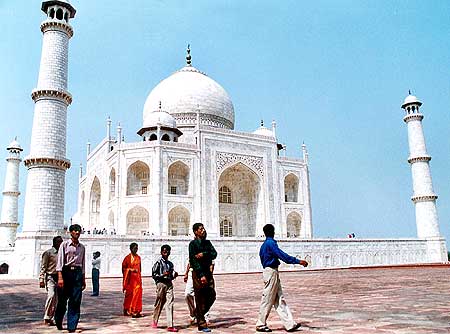
John Samuel Raja D in New Delhi
The country's priceless assets will carry a negligible price in the first of its kind valuation attempt, even as the government rejigs its accounting system and plans to put a value on all the assets it holds.
After much discussion, it was decided that the Taj Mahal, the timeless masterpiece built by Mughal emperor Shah Jahan, along with other heritage sites like the Qutab Minar, will be valued in government books at just Re 1.
This is part of the broad move to move government accounts towards accrual-based accounting system from the cash-based one within the next five years. Like a corporate balance sheet and profit and loss account statements, the government too will undertake similar book keeping.
Under the cash-based accounting, there was no need to maintain details of assets owned by the Centre or the states, as non-cash items like depreciation were not accounted for.
To address this gap as part of the move towards the accrual-based system, the government, along with the Comptroller and Auditor General of India, has already taken the first step of listing out the assets owned by the state.

In the second stage, a value would be assigned to the identified assets.
"Our aim is that in five years, we should cover at least 50 to 60 per cent of government accounting under the accrual system. This should include inventories, assets and all liabilities," said Bharti Prasad, chairperson of the Government Accounting Standards Advisory Board, which is spearheading the efforts to move towards accrual-based accounting.
A committee set up under GASAB dealt with the issue of how to value assets owned by the state. It was decided that all buildings and heritage sites that are in existence for more than 25 years and whose historical cost is not available would be given a notional value.
And for buildings that are less than 25 years old, the actual cost of construction will be provided, said G Srinivas, director with the GASAB secretariat.
However, a final decision on how to value the forests and lands owned by the Centre is yet to be taken. However, it has been decided that all acquired assets, including the land acquired under the Land Acquisition Act, would have to be provided upfront.

Another implication of accrual-based accounting is for providing non-cash items like depreciation and bad debts. Based on the total value of assets, the government will decided on a appropriate rate of depreciation over the useful life of the asset.
Similarly, under liabilities, the government cannot keep certain liabilities outside its balance sheet. For example, off-Budget items like oil bonds issued to state-run refiners would have to be accounted for.
"At present, only long-term liabilities are recognised in the government. In the accrual-based system, both long-term liabilities and current liabilities may have to be recognised. The existing defined benefit pension liability may be shown on actuarial valuation basis," said Srinivas.
Moving towards implementation of the accrual-based system, the GASAB had come out with three exposure drafts of the Indian Government Financial Reporting Standards.